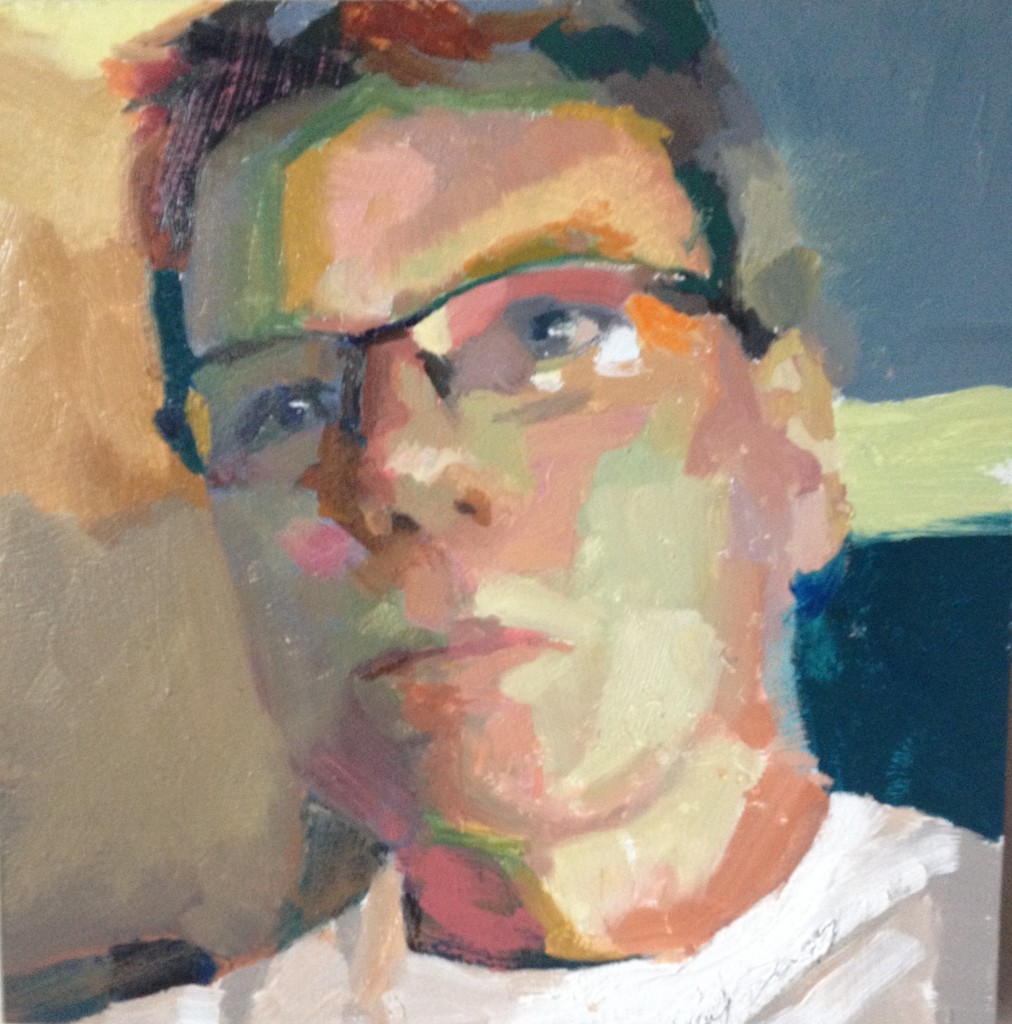Deadlines
I’ve begun to have a deeper appreciation for deadlines. I’ve been painting on firm deadlines for a couple years now, first for a two-person show at Oxford Gallery in 2012, then a solo show at Viridian Artists this past summer and now another two-person show at Oxford in March, 2015. This last deadline is pushing me to do things I haven’t done before, such as work on more than one painting at a time, and it’s also motivating me to develop more efficient ways to paint.
There’s a certain optimum pace for developing a painting. Too slow and fastidious, and the life drains out of it. Executed rapidly, it can sometimes come alive in a rare way, but it’s an unreliable and risky way to proceed with something that might quickly fall apart—which are then wasted in a discouraging way on a deadline. When I attempt premier coup work, as Edwin Dickinson referred to it, and I know it’s going well, the propulsive momentum of the work adds a different kind of vitality to the image. The effort gets concentrated into a comparatively brief time, and the life of the marks vibrate with the pressure of that quicker execution. It’s the most difficult way to paint well, because much is at stake and there’s little “going back over.” I read somewhere long ago that Francis Bacon loved tight deadlines. He would do much of his work for a particular show at the last possible minute and hang the paintings still wet. It isn’t hard to believe, given the the way he pushed paint around. For him, it worked. Yet I love, just as much, paintings that take weeks or months to complete, and they convey something far different and more subtle, some hint of what Keats called “solitude and slow time.” I’m attempting to finish examples of both kinds of painting for the show next year. In either case, deadlines are giving me a greater sense of discipline, as well as a wistful sense of how much time I used to have to do other things. (On top of the daily painting, seven days a week, I’m also up early, working on writing projects that bring in the bulk of my income. I paint with the time left free—and I’m able to do it every day.)
I tend to work in successive shifts of three or four hours, with breaks for meals or errands. I’m learning to get more done in each of these windows of opportunity. I calculate exactly how much I need to finish on each day throughout a given month and then track whether or not I’m ahead or behind of my quota. I expect by the end of the work for this next show, I’ll be producing probably twice as much work as I have in the same period of time in the past. One thing I’ve observed, no matter how much I’m enjoying work on a given painting, I procrastinate before sitting down and picking up a brush. Once I do, and once I put down the first mark of the day, it’s as if I’m already at full speed. There’s no ramping up, no acceleration: I’m fully immersed on the step-by-step progress of making the image come to life.
On balance, deadlines are helping me take my work to the next level, not only because it’s making me refine my work methods, but also because there’s no way to adhere to them without bringing the most focused sort of attention to the process. That attention—a heightened awareness of what I see and what I’m doing—is what it’s really all about. It would be nice if I could bring it to my entire life.

Comments are currently closed.